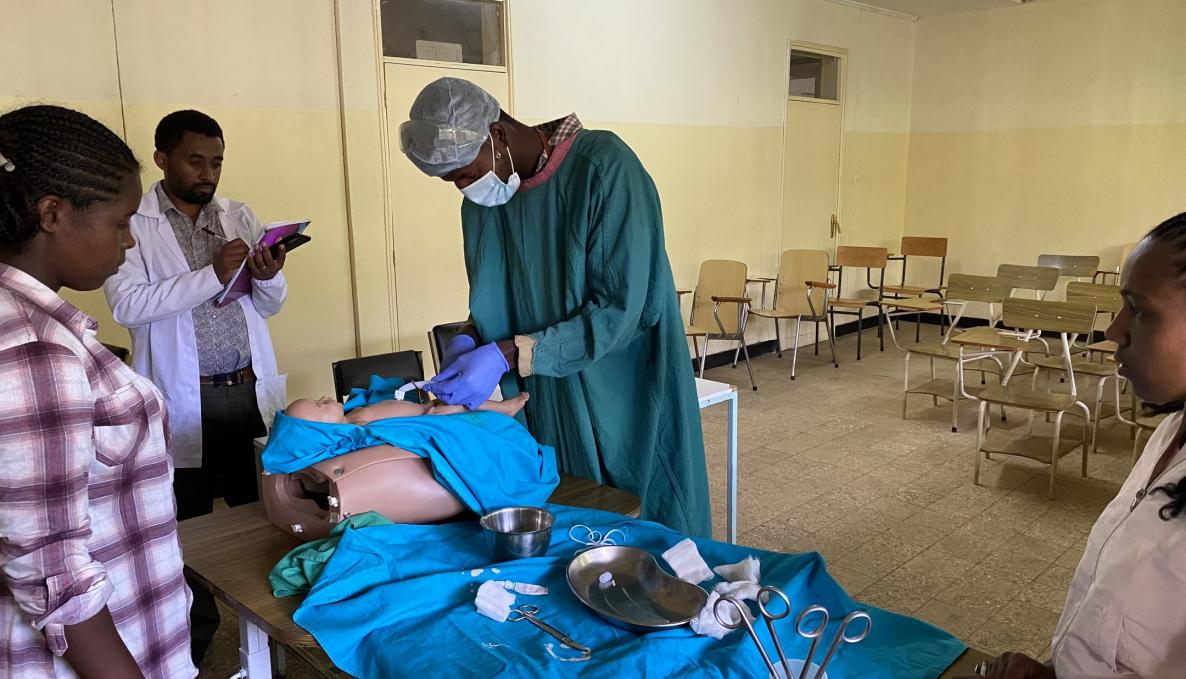Africa Connect and PRISMA project, the Sant'Anna School organised a training course in Ethiopia, at St. Luke College, on the management of the umbilical cord and placenta after birth

As part of the activities of AfricaConnect, the initiative to contribute to the inclusive and sustainable development of the enormous potential of the African continent, the Sant'Anna School organised a training course at St. Luke's College in Wolisso, Ethiopia, on the management of the umbilical cord and placenta after childbirth.
The course, aimed at second-year nursing and midwifery students, was attended by Sabina Maglio, a PhD student in BioRobotics, and Amerigo Ferrari, a PhD student in Translational Medicine. The training course, funded as part of the PRISMA project (PNRPRISMA21EP - Promoting Resilient, Inclusive and Safe CoMmunities in the Horn of Africa: in search of mutually beneficial solutions - PRISMA), was organised thanks to the collaboration between the Surgical Robotics and Allied Technologies research area led by Prof. Arianna Menciassi and the MeS – Management e Sanità laboratory coordinated by Prof. Milena Vainieri.
The course was also possible thanks to the important help of the CUAMM doctors who, together with the Ethiopian Catholic Church, run the St. Luke Catholic Hospital and College of Nursing and Midwifery.
The new simulator developed by the PRISMA project
During the course, a new high-fidelity simulator, developed in the PRISMA project, was used, which due to the materials used and the manufacturing techniques employed is able to correctly replicate the anatomy and the tactile sensation of the real anatomical structure. It is also possible to cut the simulator at the level of the cord to simulate the cutting of the real umbilical cord that is operated after birth.
After an initial phase of theoretical lectures, the participants were divided into groups and were able to practice the acquired knowledge thanks to practical sessions on three types of simulators: the newly developed simulator, a commercial simulator, and the real placenta. The final test, to assess the gained skills, was conducted using the new simulator on possible clinical routine cases.
The objective of the course, in addition to training the students, was also to validate the new simulator by means of scales widely used in the literature, such as the TAM (Technology Acceptance Model), assessing the ease of use and usefulness of the new device and any differences perceived by the participants in using the other simulators and the new one.






